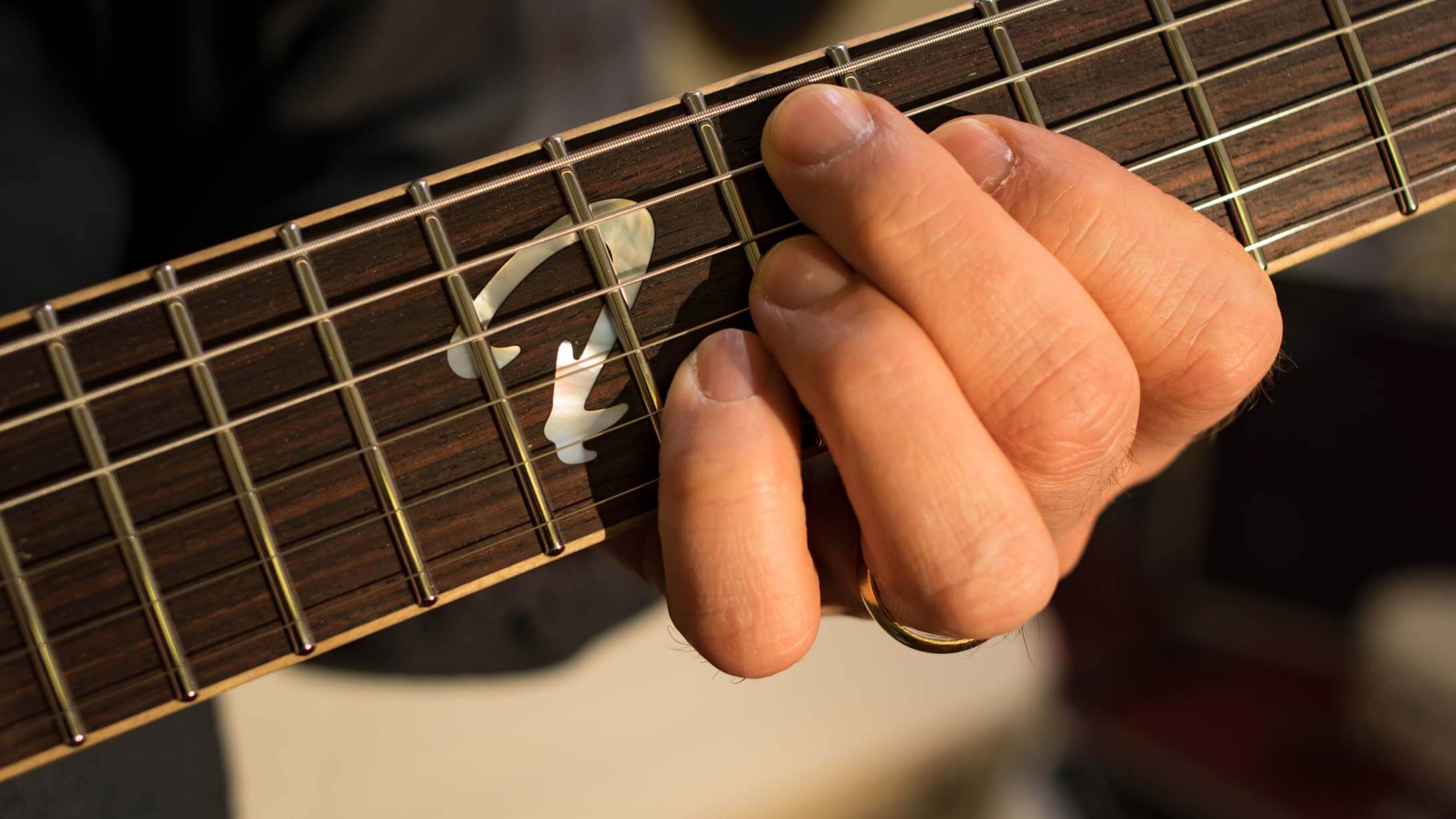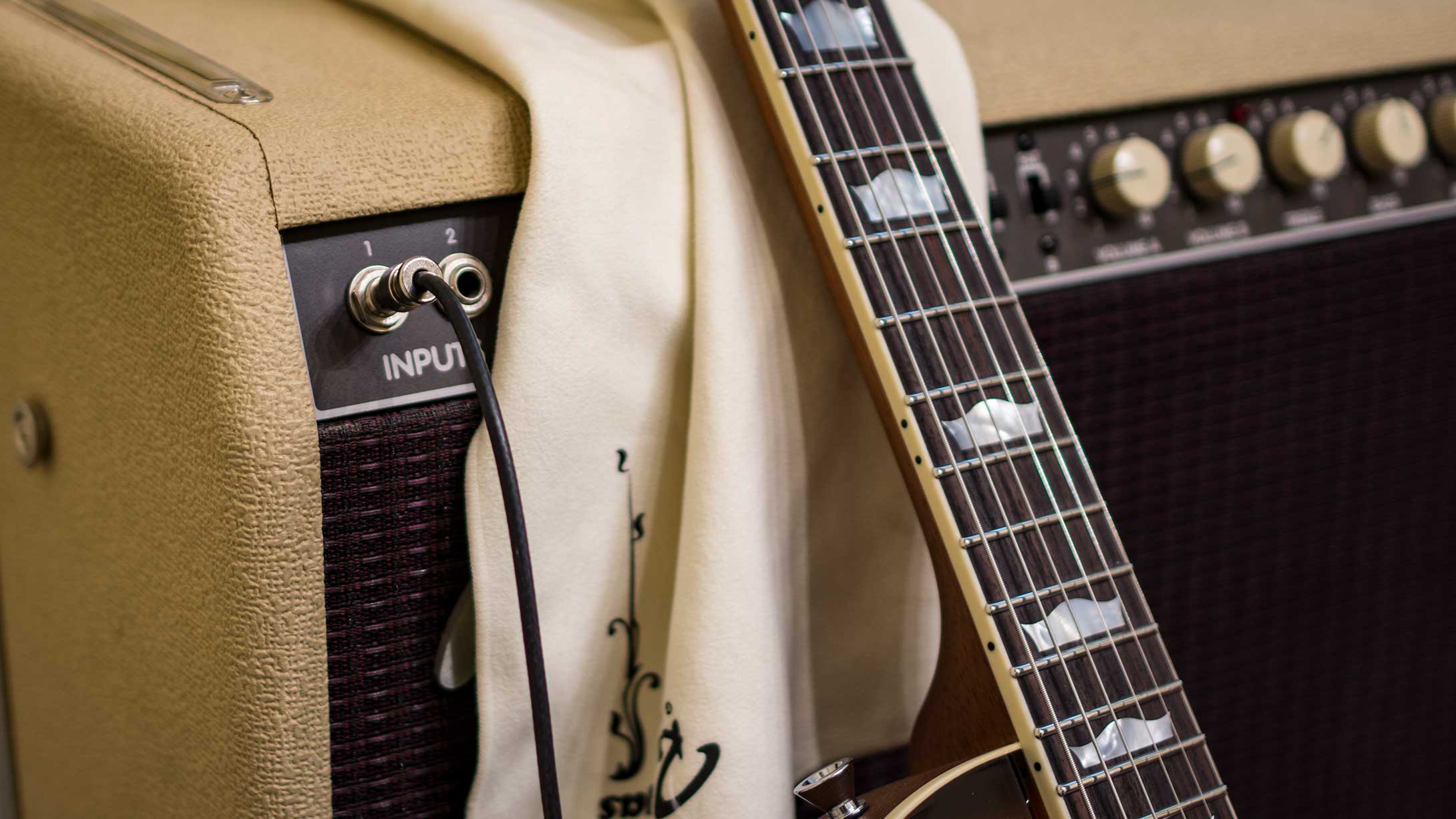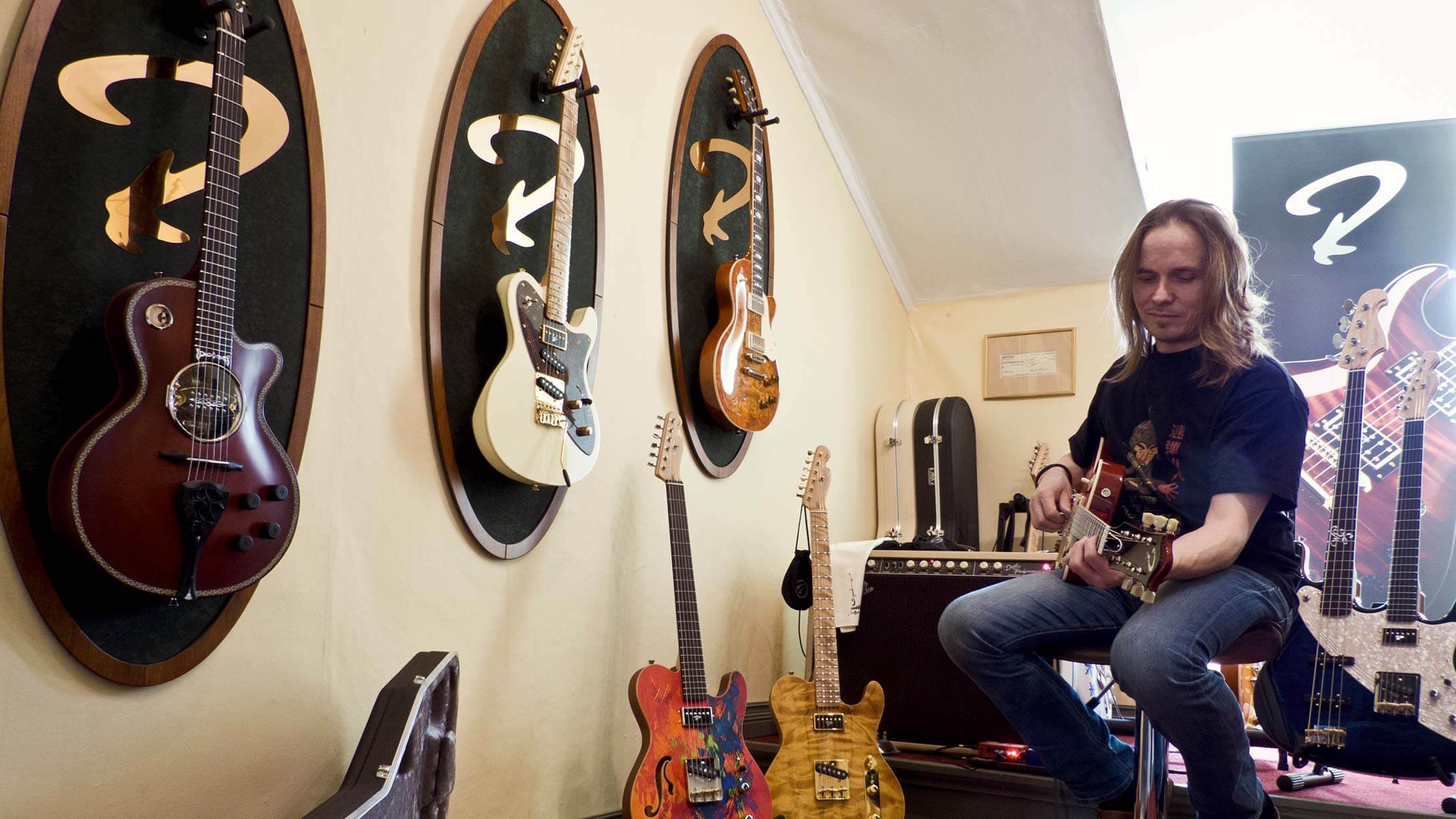
THE ELECTRIC GUITAR UNPLUGGED
Isn’t it the strings that make the tone?
People sometimes ask me if the wood materials used for an electric guitar have an effect to the sound. The answer is: Yes! There is, however, so much confusing information (or disinformation) online about this topic, that I wanted to write this article to clarify why my answer is ‘yes’.
Feel those vibrations
Let’s observe first the electric guitar unplugged. I pick it up, place it on my lap and take a chord. The strings vibrate, and part of that energy transfers through the contact points (bridge, nut, tuners) to the neck and body of the guitar. The instrument vibrates – and so my experience of the “unplugged tone” of that guitar is a combination of sound waves coming from the strings and also from other parts of the guitar. But that’s not my whole experience – I also feel the vibration of the instrument against my hands and my tummy.
Who can tell the differences?
If I put the same set of strings to ten different guitars, each one of them sounds (and feels) acoustically different to me. The strings are the same, but everything else (materials, construction, hardware) is different. So, without a doubt, there are significant tonal differences between various electric guitars when playing unplugged.
It is essential to understand that it is the player holding the guitar, who is able to analyse the sound most clearly. When you’re listening to the differences between guitars, but you’re not the player, sure, you can still hear differences, but the “feel” of the guitar doesn’t come across, cause you’re not touching the instrument. With me so far?

THE RESONANCE FOOTPRINT OF AN ELECTRIC GUITAR
How about making a guitar out of wet wood?
A couple of examples. We’re still unplugged here. If I make a guitar out of a piece of wood that has just been cut down (and not dried), the guitar won’t vibrate a whole lot.
The heavy and wet piece of wood will suck all the energy from the strings, and the guitar will sound more or less like a wet sock. In other words, the sound is very weak without much high frequencies – no striking mids, and the bass doesn’t sound too healthy either. It’s dead.
Oh my God this is loud!
If I, instead, make a guitar out of dry, light weight and rigid wood materials, the strings will stimulate the wood to vibrate. Depending on the wood species and other mechanical features of the guitar, I hear a sound that I might describe with phrases like “strong mid range push”, “oh my god this is loud”, “too muddy”, “nice and open lows” or something else.
What I’m hearing depends on how the different parts of the guitar vibrate – in other words, what frequencies are more pronounced than others. So it is the guitar itself (including the strings) that define the “resonance footprint” of that particular instrument.
The energy comes from your fingers
When I play, I hear the sound waves and feel the vibrations that are being transferred from strings to the instrument. I’m also hearing the sound waves that feed back from the body and neck to the strings, coupling certain frequencies and canceling others, depending on the aforementioned resonance footprint of the instrument and my touch as a player.
It is essential to notice that when I am playing without amplification, all the energy comes from my fingers. I pluck the strings that start to vibrate. There is no energy coming from elsewhere.

CRANK UP THE VOLUME
Plugging in – what changed?
When I plug the guitar into an amplifier, the situation changes significantly. Let’s say I turn up the volume loud enough so I can’t hear the acoustic sound of the guitar anymore. So – I take a chord, and the strings vibrate just like they did unplugged. The vibration still transfers partly to the guitar just like it did before. But – what I’m now hearing is not the guitar itself.
I can feel the tone in my whole body
Let me walk you through what exactly happens. The vibration of the strings (that is constantly being shaped by the coupling and canceling frequencies caused by the “resonance footprint” of the guitar) moves the magnetic flux of the pickup, generating a signal that transmits to the amplifier via the guitar cable.
The amplifier does what it’s supposed to do – amplifies the signal – and pushes it to the speaker element and out to the room where I’m playing. So what I’m now experiencing is a more complex phenomenon – the sound is shaped by the amplifier, the speaker element, the speaker cabinet, the room I’m in – and also by the volume level which I don’t only hear but also feel in my body.
What’s happening here?
The situation is unarguably a whole lot different from playing unplugged. And yet – if my guitar had a “strong mid range push” unplugged, I still hear that same character singing through! And when I crank the volume louder, those mids push through even more! Why? What’s happening here?
Well, the sound waves firing to the room from the speaker are making the guitar vibrate more. And again, the way the guitar starts vibrating is shaped by the resonance footprint of that particular guitar.
Let’s change perspective
Let’s look at the amplified situation from the perspective of the guitar strings. Whereas in an unplugged situation all the energy came from my fingers, now the strings are being fed with energy from three different directions: 1) my fingers, 2) the speaker element and 3) the vibrations from the body and neck of the guitar, generated by the sound waves in the room.
Psychophysicalacoustic… what!?
The guitar is operating now as a sort of “passive amplifier” for the strings – and again, the resonance footprint of the guitar shapes which frequencies are coupled or cancelled. “Acoustic feedback” would be a suitable term for this phenomenon.
Again – the differences between individual electric guitars are way more obvious to observe when holding the guitar and playing it yourself. As a bystander, you can hear differences for sure, but half of the fun comes from the complex psychophysicalacoustic experience playing the guitar!

THE 4 ELEMENTS THAT SCULPT THE AMPLIFIED TONE
So we’ve learned that it is possible to observe separately the acoustic scenario of playing the electric guitar, and arrive to somewhat unambiguous conclusions.
It keeps getting more complicated
When observing the amplified tone, the phenomenon is more complex. In a simplified form, the amplified sound is sculpted by at least these four elements: 1) the acoustic properties of the guitar, 2) the whole electrical signal chain, 3) the space where the guitar is being played in – and obviously, last but not least 4) the person playing the guitar.
The client, a convenient guinea pig?
May sound like off the topic to you, but this (what I write about in this article) is the reason why I don’t offer a wide variety exotic wood combinations for my guitars. There would be so many variables that I would have no way of knowing how they would exactly work. I don’t want my clients to be my guinea pigs. One can only learn about a certain wood species through extensive usage of that wood.
A thousand guitars later
Wood is a living material – every piece is a little different from the rest. When I had built ten guitars out of spanish cedar I thought I know the wood inside out – but now, after about a thousand guitars later, I have in fact learned that I still don’t know everything about this magnificent wood species – but I certainly know the stuff well enough to be sure that every guitar we make using this material (and my other long term favourites) will be a superb musical instrument.
For those who didn’t quite get enough yet – I continue to analyse the electric guitar tone in another article – this time from the pickups’ perspective. You’ll find it here.
MYTHOLOGY OF TONE
This lecture was recorded at Montreal Guitar Show back in 2010, and it touches in some ways the topic of this ‘tone talk’ article. It covers a lot of other stuff too, but might be interesting to those interested in guitar sound. It is a playlist of 7 videos, as in those days one couldn’t upload such long videos to YouTube.
What is it that makes a good guitar? I suppose I’m still on that road, relentlessly looking for answers.
– Juha Ruokangas